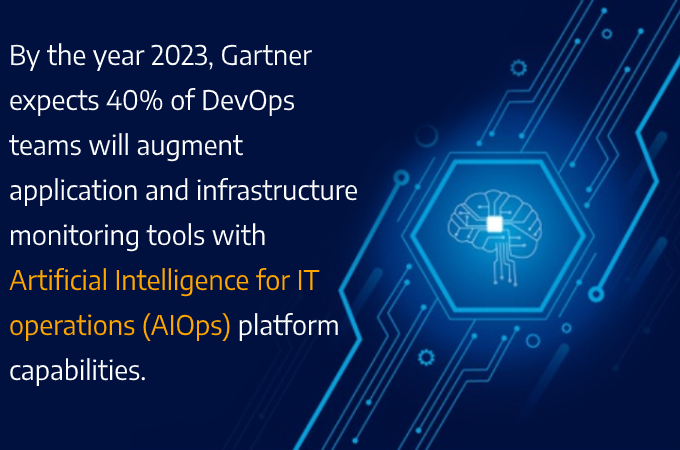
Every so often, a black swan appears and dramatically changes the business world. The year 2020 experienced one of the worst black swan events in history – the global pandemic, which has significantly transformed many aspects of life. Companies in nearly every sector are being pushed to reassess almost every part of their operations. Many industries are fighting to stay afloat, and numerous businesses are closing down. For those who can endure the challenges, significant changes are being imposed, with IT playing a key role in these shifts.
From new methods to manage a remote workforce to fresh approaches for attracting new customers, IT departments have had to be very creative, very quickly. Common IT issues, like managing data protection, establishing a solid cybersecurity framework, developing a suitable data governance program, digitally transforming a business, training staff, preparing for new technology, and practical concerns like which hardware to purchase and what software to license, remain despite the global crisis.
Instead, CIOs need to juggle the above issues with the larger question of how to save money in these radically altered business times. However, because of the black swan nature of this event, there might be no better time to find savings amongst vendors and consultants. Here are ten areas to look at:
1. Software Licensing – Software is, of course, an integral part of every IT estate, second in importance to the hardware it runs upon, but, because the software has become so sophisticated in this day and age, the IT leadership probably don’t know how their current software stacks up to competing products in the marketplace. Today’s data integration software might contain business intelligence and analytics components that are powerful enough to handle many of the company’s analytics needs.
The same is true for many of today’s powerful digital marketing software. CTOs or CIOs should compile all their commercial software licenses, including perpetual and non-perpetual ones, then compare and contrast not only the current features of their software but the road-mapped ones as well. This will help reduce the costs of unnecessary software. Renegotiate accordingly.
2. Cloud Computing – This can help reduce capital expenditures considerably, as hardware and even software might not have to be purchased in-house. Cloud computing reduces the need for IT tech staff and the cost to repair, replace, or upgrade equipment is passed onto the cloud vendor.
Cloud bursting can help companies that only want to use a cloud solution during times of peak system use or stress, or when additional processing power is needed when complicated modeling is required. Cloud bursting allows companies to keep the bulk of their work local and only ‘burst’ into the cloud the local IT estate gets overwhelmed.
3. AIOps – ‘Artificial Intelligence’ (AI) and Operations (Ops) tools do two things – collect and analyze IT data, which can help speed up problem resolution in IT operations. AIOps tools perform real-time analysis on mass quantities of event data while inferring probable root causes, proactively predicting upcoming operational issues, and helping self-heal the IT environment. In general, AIOps delivers control over chaos through its three pillars – Big Data, AI/Analytics, and IT Operations Insight, which includes automated actions.
The AI and analytics component uses machine learning models to identify and locate problems, predict future incidents, as well as understand which changes will affect the companies critical business processes, which should help alleviate them in the future.
4. Robotic Process Automation – RPA tools operate on the user interface of a computer system just like a human would, turning a computer into a functioning human who responds to a set of repetitive instructions. RPA carries out coded instructions on structured data, either through GUI interactions or via an API.
5. Hyperautomation – Listed as Gartner’s number one technology trend for 2020, “Hyperautomation refers to the combination of multiple machine learning, packaged software and automation tools to deliver work.” It includes the application of advanced technologies to both automate business processes as well as augment humans.
6. Capacity Planning – This can determine the production capacity needed by an organization to meet its constantly changing IT demands. This involves estimating the storage, computer hardware, software, and connection infrastructure resources required over a set period. It specifically involves the addition or subtraction of central processing units (CPUs), memory, and storage to physical and/or virtual servers. Done right, capacity planning can ensure systems are constantly running in an optimal environment and that cloud bursting – deploying an application that runs in a private cloud or on a local data center bursting into a public cloud when demand spikes – are kept to a minimum.
7. Contract Reduction or Termination – Scour contracts for termination clauses or renegotiation steps. The reality is just about everyone is in the same COVID-19 business boat right now and this could be a good time to renegotiate contracts, even with software, hardware, networking vendors, as well as consultants. At the very least, you’ll know who you can count on in times of trouble and whose termination clauses might be worth exercising.
8. Managed Services – Software as a Service has morphed into Analytics as a Service, Marketing as a Service, Security as a Service, as well as several other types of managed services. These can be great ways to outsource parts of your business to companies with expertise that, in many cases, is expensive to replicate in-house.
9. Labor Cost Reduction – Cloud computing can reduce personnel costs because there is less demand for IT staff when large IT estates aren’t needed. Managed services also reduce personnel needs so employee count can be reduced or employees retrained for other positions.
10. Increase Productivity – Cloud computing can increase workforce productivity by making deployments considerably faster than conventional installations. Cloud software deployment can take a few hours rather than the usual weeks or months for a standard company-wide software installation. Cloud and SaaS applications, which are usually web-browser applications, can be taught quickly, therefore adoption time is significantly reduced when compared to conventional software.
“In the midst of chaos, there is also an opportunity,” said the famous philosopher Sun Tzu. This quote should be kept in mind when facing times as turbulent as these. However, opportunities abound when radical realignments occur. Today’s CIOs have the chance to reassess everything that has come before them in a way few have in the past. Technology is far more sophisticated than it was just a few short years ago. Cloud computers can be spun up in seconds. AIOps and capacity planning solutions can ensure there is no CPU or storage system wastage, and the overall system will continue running smoothly and most optimally. Now, there’s no more time or budget to waste as it will help every organization.
